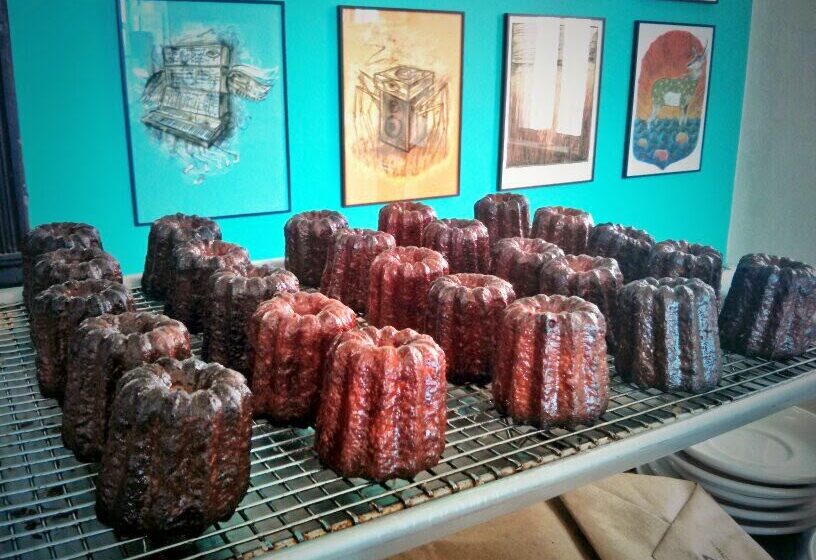[C]anelé, or cannelé bordelais, is a rich, French, vanilla bean, butter, and rum-infused cake with a devout following. Baked in bundt-shaped molds, with a dark, crunchy exterior—carmelized to a warm mahogany—and a spongy and rich center, canelé offers an elegant dichotomy in flavor, with a taste that seems born to belong beside coffee. Next to petite macaron and buttery croissant—two French pastries that have infiltrated coffee culture admirably—canelé is a little bit of an unknown. But something this good doesn’t stay secret for long, and though canelé is most commonly spotted in French bakeries, coffee shops with room to bake are beginning to adopt it as a specialty.
“People love them,” says Joanthan Ory, chef and owner at Bad Wolf Coffee in Chicago. Jonathan says that even with larger batches, sometimes fifty cakes at a time, he is likely to sell out at his small, Lakeview storefront. As canelé starts to earn a cult following in the realm of artisan coffee, in cities like Chicago, Portland, and Los Angeles, its appearance is less uncommon, but rarely expected, keeping its coveted nature intact.
Akin to house-kegged cold-brewed coffee on nitro, small-batch masala chai, and brown butter chocolate chip cookies, there is a slow-food appeal to canelé that keeps it off too many menus. While not impossible to make, it takes skill to dial in canelé just right. Jonathan spent time in high-end restaurants like Momofuku Ko in New York and Schwa in Chicago before opening Bad Wolf and was an accomplished chef when he set his mind on pastries. Still, the café owner spent three years perfecting his canelé recipe before selling the cakes in house.
Not just tricky preparation, but tradition and history also feed into canelé’s grail-like status. Potentially invented by nuns in an eighteenth-century French convent, in the 1980s, eighty-eight patissiers in Bordeaux formed a brotherhood of pastries to protect the cake as their own. Canelé de Bourdeaux became the name of the official cake of the region, while cannelé bordelais is the generic variation found across the globe. (Savory and non-traditional canelé would fall into this category, too.) Today both words are interchangeable, depending on who you ask. In Bourdeaux they are traditionally served with wine or cocktails, and even available in the region’s McDonald’s.
It’s not clear how canelé made its way from a French delicacy to a coffeehouse specialty; but it seems all too natural. “I think it’s just the latest thing,” says Jonathan of canelé’s rise to popularity among coffee connoisseurs. “However, they kind of cross the board flavor wise. The outside is dark caramel and the inside is light and eggy with rum and vanilla. Pretty much everything that goes well with coffee.”
—Regan Crisp is Fresh Cup’s Associate Editor. Photo courtesy Bad Wolf Coffee.















